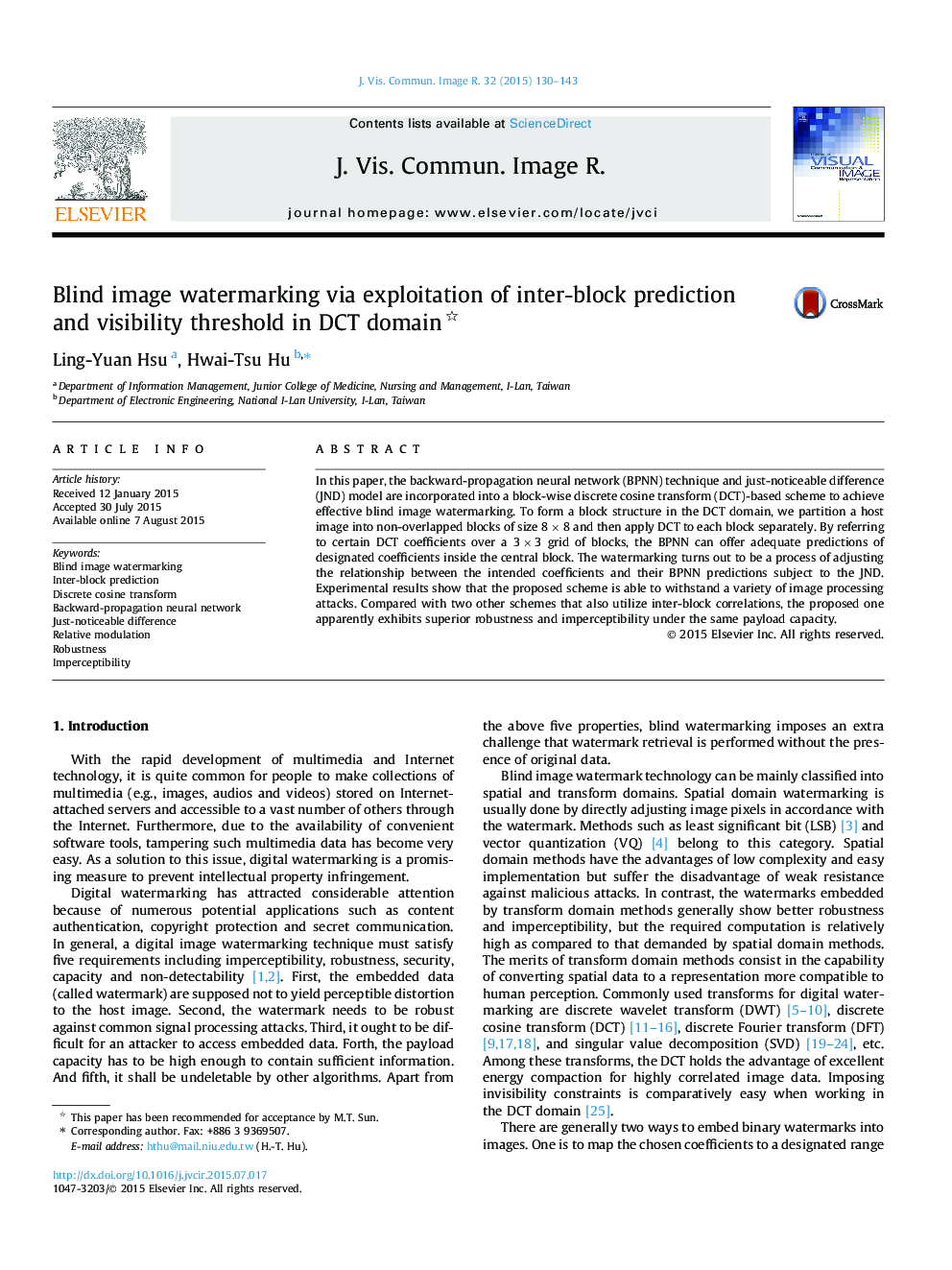| Article ID | Journal | Published Year | Pages | File Type |
|---|---|---|---|---|
| 528999 | Journal of Visual Communication and Image Representation | 2015 | 14 Pages |
•Inter-block relation in DCT domain is exploited to attain blind image watermarking.•A neural network offers an appropriate prediction for relative comparison.•The relation between a coefficient and its prediction leads to binary embedding.•Embedding strength is adjusted subject to a just-noticeable difference model.•The proposed scheme exhibits superior robustness and imperceptibility.
In this paper, the backward-propagation neural network (BPNN) technique and just-noticeable difference (JND) model are incorporated into a block-wise discrete cosine transform (DCT)-based scheme to achieve effective blind image watermarking. To form a block structure in the DCT domain, we partition a host image into non-overlapped blocks of size 8 × 8 and then apply DCT to each block separately. By referring to certain DCT coefficients over a 3 × 3 grid of blocks, the BPNN can offer adequate predictions of designated coefficients inside the central block. The watermarking turns out to be a process of adjusting the relationship between the intended coefficients and their BPNN predictions subject to the JND. Experimental results show that the proposed scheme is able to withstand a variety of image processing attacks. Compared with two other schemes that also utilize inter-block correlations, the proposed one apparently exhibits superior robustness and imperceptibility under the same payload capacity.
